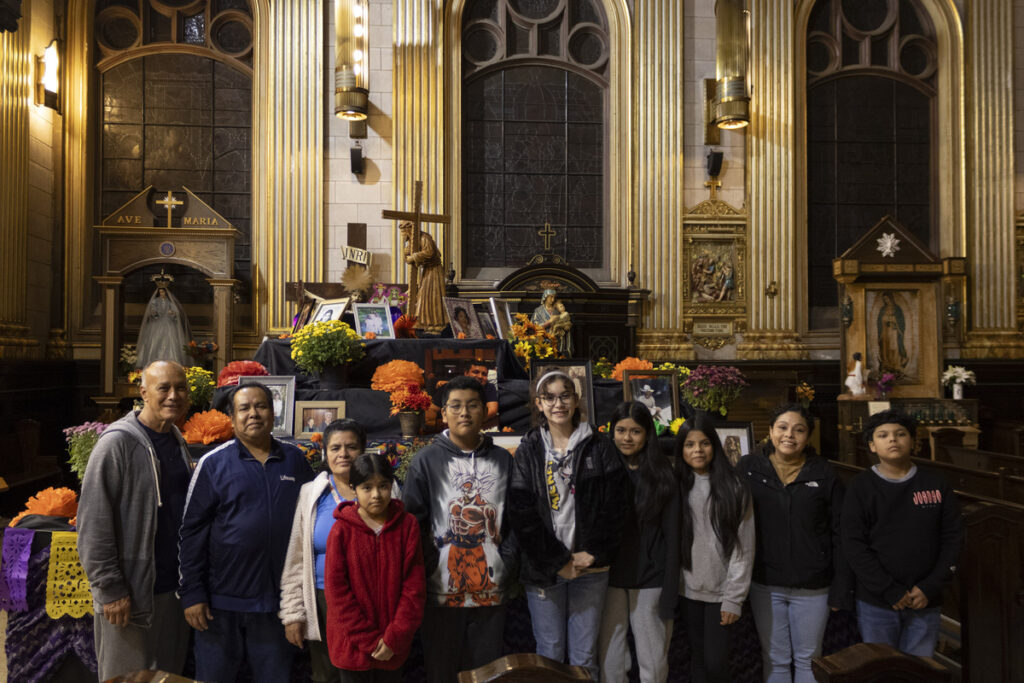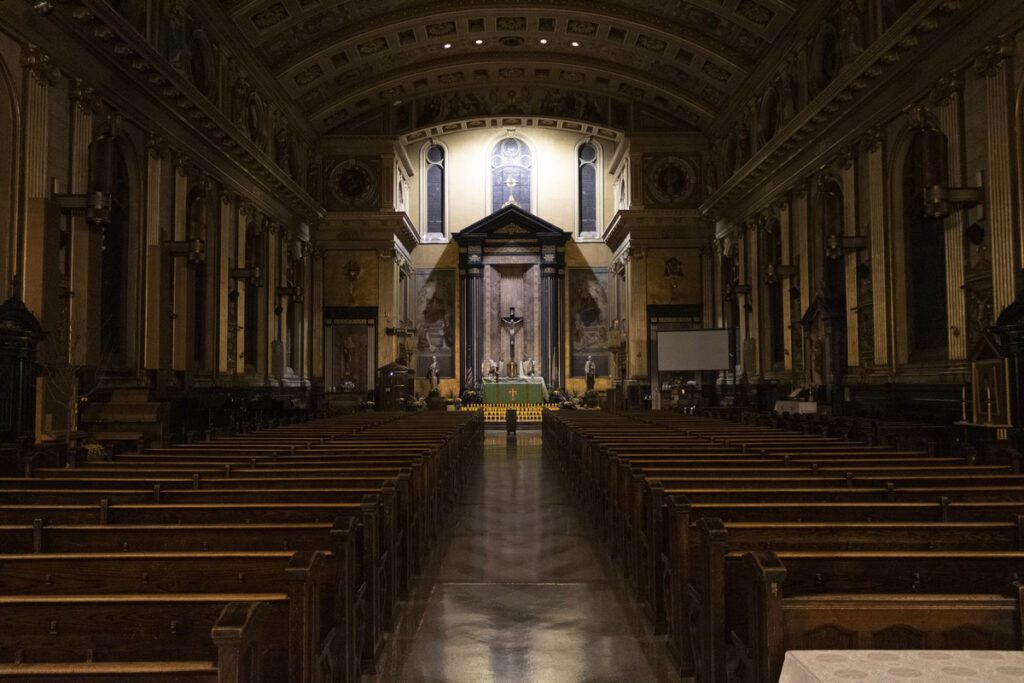Decorated with an array of tangerine hues, the towering ofrenda at St. Jerome Parish at 1709 W. Lunt Ave. is a monument draped in colorful papel picado, orange flowers and framed photos of friends and family members who have died.
St. Jerome Parish Celebrates Día de los Muertos
Decorated with an array of tangerine hues, the towering ofrenda at St. Jerome Parish at 1709 W. Lunt Ave. is a monument draped in colorful papel picado, orange flowers and framed photos of friends and family members who have died.
The Rogers Park parish has set up an ofrenda — or altar — for the community to celebrate Día de los Muertos, a Mexican holiday with Indigenous roots to honor deceased loved ones and celebrate death.
Francisco Marín, a deacon at St. Jerome Parish, spoke to the importance of the relationship of life and death during the holiday.
“We don’t believe in death, we believe in life,” Marín said. “So it’s very meaningful and special, the moments we express during this time.”
Intended to be bright and colorful to help the spirits navigate to the realm of the living, ofrendas are often decorated with colorful papel picado — a decorative paper — cempasúchil flowers and other meaningful belongings of the dead kept by family members.
To honor his mother, Marín has placed decorative glass stones on the ofrenda at St. Jerome.
“My mother used to say that we were the stones of her family,” Marín said.
The deacon said his mother was the cornerstone of his house. He said her motto ties into the Catholic belief that those baptized become metaphorical stones, building the foundation of the church in the same way she built the foundation of his family.
Marín said he put the stones in a small, rustic-looking box to honor her memory, as she loved to keep her jewelry in small boxes just like the one on the ofrenda.

Angel Serrano, an altar server at St. Jerome, said his family placed a photo of his grandfather on the ofrenda. To honor his memory, Serrano said his family put pan de muerto, cempasúchils and holy water around his photo.
Pan de muerto is a type of bread commonly associated with Día de los Muertos, according to The Los Angeles Times. The bread often has a cross on top of it but sometimes will be decorated with images of bones.
Altar server Jasmine Carrera said the bread and holy water are left out so the spirits can eat and drink while they’re in the realm of living humans.
“We put flowers and this bread and water because we believe that their spirit comes and they nourish themselves with the food and water,” Carrera said.
Cempasúchil, or marigolds, decorate ofrendas not just for their color but also for their distinct scent. The fragrance of the flowers is meant to guide the spirits of the dead to the ofrenda, according to NPR.
While some cempasúchil are living, others are hand crafted as large paper replicas of the flower, with tissue paper petals floating in the soft breeze inside the church.
The parish has been making communal ofrendas for a few years now, with the initial altar being outside, Marín said.
“It came from, you know, from the past, from the people who used to belong to this parish,” Marín said. “And they tell me about all the spirits that they have from Mexico and some other places in Central and South America.”
The tradition of setting up the ofrenda has been passed on from family to family with the intention of celebrating life, according to Marín.
“But it was so meaningful for all of the people who were a part of the parish,” Marín said.
St. Jerome is a Catholic parish, but the holiday has roots in indigenous spiritual practices.

The celebration began as a way to honor the dead and celebrate the incoming harvest in Olmec and the following Toltec civilizations, as well as the Mixtecs, Zapotecs, Mayans and Aztecs, according to The Los Angeles Times.
“But every year, during the month of August, they believe that they come and reunite with them,” Marín said of the indigenous celebrations of Día de los Muertos.
These celebrations mirror the more modern forms of observance, as ancient celebrants would also place items valued by the family members while they were alive on the altar, according to The Los Angeles Times. Additionally, those celebrating would visit the places where their loved ones were buried with their families, Marín said.
Marín said Indigenous celebrants believed celebrating the memories of their loved ones was a way of bringing them a kind of eternal life, similar to how the Catholic Church celebrates life after death.
“We believe that they don’t come with us,” Marín said. “But someday we die and their memories, we celebrate, so we can all come alive as a church.”
Featured image by Ryan Pittman / The Phoenix
-

Audrey Hogan is a third-year student from Morgan Hill, California studying Communications and Political Science. This is her third-year as a writer and second-year on staff as Engagement Editor. She's written about the perils of academic pedigree, table tennis and Peter Gabriel, too. In her free time, she likes to read and walk.
View all posts










